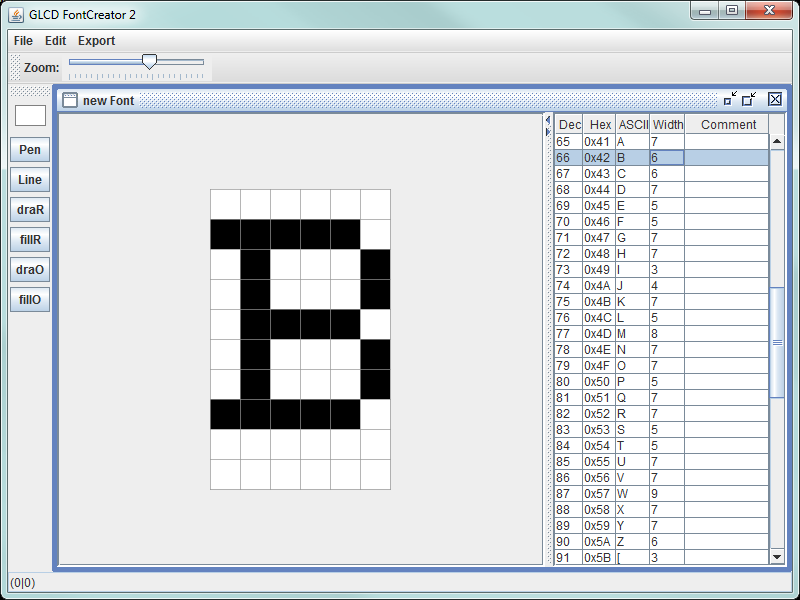

- WHAT LANGUAGE IS RASTER GRAPHICS EDITOR WRITTEN IN HOW TO
- WHAT LANGUAGE IS RASTER GRAPHICS EDITOR WRITTEN IN MOVIE
- WHAT LANGUAGE IS RASTER GRAPHICS EDITOR WRITTEN IN PDF
- WHAT LANGUAGE IS RASTER GRAPHICS EDITOR WRITTEN IN MANUAL
- WHAT LANGUAGE IS RASTER GRAPHICS EDITOR WRITTEN IN FULL
Keep reading, and you’ll soon understand how it all works.
WHAT LANGUAGE IS RASTER GRAPHICS EDITOR WRITTEN IN MOVIE
The reason why this movie line became an inside joke is that knowing the difference between vector and raster graphics was and still is essential to the print quality of those ideas.

WHAT LANGUAGE IS RASTER GRAPHICS EDITOR WRITTEN IN HOW TO
And the people in between were figuring out exactly how to get that done. Printers were working on getting those ideas printed as well. At that time, industrious graphic artists were working on getting their ideas printed on paper. To write it to a file you would simply do: image_write(animation, "gapminder.This famous line from Airplane served as an inside joke to people in the graphic arts, especially when the desktop publishing industry began to emerge. The code below shows how you would implement the example from the very cool gganimate package using the magick graphics device. The graphics device supports multiple frames which makes it easy to create animated graphics. You can override all this by passing custom xlim, ylim or mar values to image_draw. Note that this means the y axis increases from top to bottom which is the opposite of typical graphics coordinates. # Or paint over an existing imageīy default image_draw() sets all margins to 0 and uses graphics coordinates to match image size in pixels (width x height) where (0,0) is the top left corner. Print(animation) # format width height colorspace matte filesize densityĪnimations can be saved as GIF of MPEG files: image_write(animation, "Rlogo-banana.gif")Īnother way to use the graphics device is to draw on top of an exiting image using pixel coordinates. Manipulate the individual frames and put them back into an animation: # Background imageīackground <- image_background(image_scale(logo, "200"), "white", flatten = TRUE)įrames <- image_composite(background, banana, offset = "+70+30")Īnimation <- image_animate(frames, fps = 10, optimize = TRUE) Image_info(banana) # format width height colorspace matte filesize density If you read in an existing GIF or Video file, each frame becomes a layer: # Foreground image Morphing creates a sequence of n images that gradually morph one image into another. Instead of treating vector elements as layers, we can also make them frames in an animation! image_animate(image_scale(img, "200x200"), fps = 1, dispose = "previous") Image_info(manual) # format width height colorspace matte filesize density
WHAT LANGUAGE IS RASTER GRAPHICS EDITOR WRITTEN IN MANUAL
manual <- image_read_pdf('', density = 72)
WHAT LANGUAGE IS RASTER GRAPHICS EDITOR WRITTEN IN PDF
Note that PDF gets rendered while reading so you need to specify the density immediately. When reading a PDF document, each page becomes an element of the vector. Image_annotate("The same thing with pipes", color = "white", size = 30)

Image_background("blue", flatten = TRUE) %>% Here we give professor frink an orange shirt for the World Cup.Įach of the image transformation functions returns a modified copy of the original image. Its value must be between 0 and 256^2 specifying the max geometric distance between colors to be considered equal. The fuzz parameter allows for the fill to cross for adjacent pixels with similarish colors. With image_fill we can flood fill starting at pixel point. Image_modulate(frink, brightness = 80, saturation = 120, hue = 90) # Add 20px left/right and 10px top/bottom # Example imageįrink <- image_read("") print(frink) # format width height colorspace matte filesize density
WHAT LANGUAGE IS RASTER GRAPHICS EDITOR WRITTEN IN FULL
The full syntax is specified in the Magick::Geometry documentation.


 0 kommentar(er)
0 kommentar(er)
